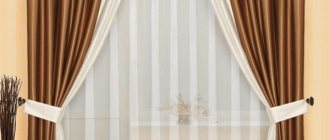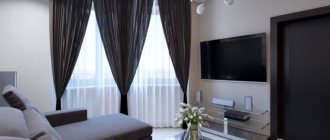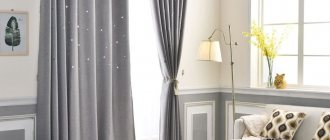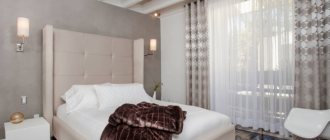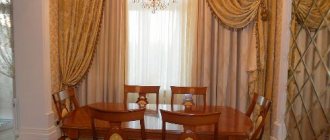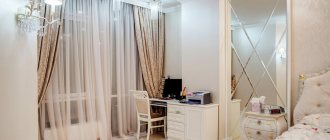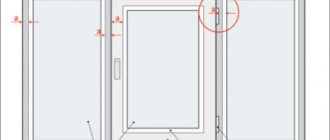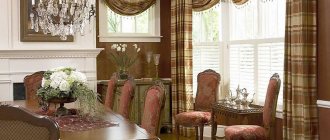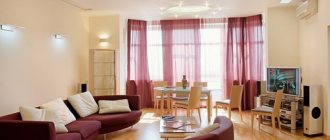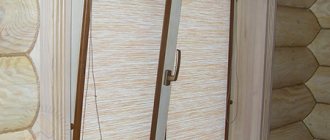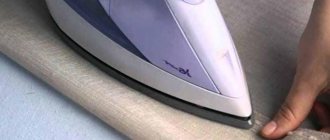Share
Tweet
+1
Pin
Curtains are an integral part of any room. The further comfort of the owner while in the room will depend on their choice. If the room is without curtains, it will seem empty and incomplete. That is why it is very important to choose the right curtains that suit the overall interior.
Selecting textiles depending on the room
It's no secret that with the help of curtains you can visually adjust a room, add height or width. This is the first thing you should pay attention to. If the room has low ceilings, as is often the case in old houses, it is best to avoid massive lambrequins and heavy, heavy fabrics. Light curtains and straight curtains made from natural fabrics are more suitable. High halls with narrow windows are best decorated with luxurious curtains that fall down in waves. Geometric stripes on curtains matter.
Horizontal lines expand the room by pushing the visual boundaries of the window to the sides
Vertical lines give the impression that the room is higher than it actually is.
The lighting and orientation of the room are of great importance. Northern windows will never be exposed to intense insolation, so fabrics that are sensitive to sunlight can be used here. The fabric should not be too dense, light in color and not burden the appearance of the window. It is better to decorate southern and eastern windows with curtains that have a low solar penetration rate. It is better to dilute the composition of heavy curtains with light tulle.
You should definitely consider the purpose of the room for which you are choosing curtain fabric. If this is the living room,
Curtains for the living room
Pay great attention to noble, expensive textiles. This is the room where guests are received and it should be harmoniously and carefully decorated. Beautiful curtains with a lambrequin in combination with tiebacks and other accessories will help with this.
If the curtains are intended for the kitchen, you should take into account the large amount of fumes and the high probability of getting them dirty as soon as you hang them. You need to choose a fabric that is resistant to frequent washing and not too picky to care for. Here it is worth paying attention to light colors that do not block light from entering the room.
Curtains for the kitchen
Basic rules for choosing fabric for curtains
Taffeta curtains do not fade in the sun and are easy to wash.
So, these were the basic parameters for choosing fabric for curtains in a well-lit room.
But besides all this, you should know the general rules for selecting material for curtains, which are universal.
Moreover, this is especially true for those who are going to sew curtains with their own hands.
Choosing a shade and pattern of curtains
Polyester curtains do not lose their color after repeated washing and are very durable.
- It is necessary to choose a material for curtains with a horizontal pattern or ornament to visually expand the window and a vertical one to visually increase its height. Ornaments diagonally or in a circle can increase the window both in height and width, or simply leave its size visually unchanged. Here a lot will depend on the size of the pattern: the larger and more voluminous the ornament is, the more it will increase the window opening.
- You need to pay attention to the main shade of the room. If the room is done in cool colors, then it is advisable to choose fabric for curtains in a tone that is slightly warmer than neutral. A too warm room can be slightly cooled with a neutral or cool shade of curtains. This way you can restore the light balance in the room.
- To prevent the room from merging into one faceless spot, you need to try to select curtains so that their tone is darker or lighter than the wallpaper. At the same time, attention is paid to the drawing. So, for a room where the wallpaper is plain, it is better to choose curtains with a bright pattern. And for a room with bright wallpaper, it is best to choose a more restrained curtain design.
- It is very important that the design on the curtains contains visible elements of the same color as individual places on the walls or floor. This way the curtains will not look alien and inappropriate in the room.
Related article: How to make a round lace lamp with your own hands: 2 ways
Functional Features
Curtains made from natural fabrics are environmentally friendly and good for use in children's rooms.
- A good option is to choose two different curtains for the same window. So, for the winter, it is most convenient to hang curtains made of thicker fabric on the window, which will create warmth in the room and not allow light wind to pass through. In this case, viscose or velvet gives a good effect. For the summer, it’s good to buy light curtains made of cotton or linen, which will slightly refresh the room, giving it more fresh air.
- When choosing curtains for any room, it is important to consider their purpose. So, if curtains are needed for protection from the sun, then special attention should be paid to the degree of fading of the material in light. If you need curtains as a decoration that will simply serve as a window frame, then you can use almost any fabric and shade.
- It is very important to choose a type of curtain fabric that can be washed without any problems. Almost all curtains on sale now are suitable for repeated washing, if, of course, it is done manually or in a delicate machine mode. But if you want to hang expensive curtains with lining, then you can forget about washing completely. Such fabrics either need to be taken to the dry cleaner, or left hanging on the window and collecting dust. Therefore, think for yourself: do you need such an expensive and impractical pleasure?
Important nuances when choosing curtains
The choice of fabric and color of curtains depends on the style of the interior, the size of the window openings, the color of the walls and wallpaper.
- Particular attention should be paid to the choice of material for curtains if the window already has horizontal blinds. Here it is important not only to choose curtains that match the overall style of the room, but also to match the color and texture of the blinds. So, for a window with blinds, it is completely unacceptable to select fabric for curtains with a strictly horizontal pattern. A strictly vertical ornament may also not look harmonious enough. It is best to choose a fabric with light colors, the shade of which will only slightly overlap with the shade of the blinds.
- If you decide to sew curtains from fabric to order or with your own hands, then first it is advisable to buy a small piece of the desired fabric, hang it on the curtain rod and see how it all looks. Particular attention is paid to drapery and shade.
Related article: Linen curtains: recommendations for selection and operation
And at the same time, immediately check the material for practicality: wash it several times and iron it with a warm iron. If the fabric is good, it will not fade, will not lose its shade even partially when ironed, and will not provoke the appearance of scorch marks.
So, now you know how to choose the right fabric for curtains.
It is important to take into account in this matter both universal rules and those specifically provided for brightly lit rooms.
With a successful choice of curtains, you can enjoy the comfort of the room for a long time.
The best posts
- How to make a plasterboard ceiling in the kitchen with your own hands
- How to paint drywall: little tricks
- Socket boxes for drywall: correct selection and installation
- Grouting drywall joints: materials and techniques for performing the work
- Epoxy resin, application
- How to cover a radiator with plasterboard without losing heat in the room
- Repair of plasterboard ceilings: we fix the problem ourselves
- Machine for the production of profiles for plasterboard: production of frame elements
Natural fabrics or synthetic. How to choose fabric for curtains?
The dilemma in choosing suitable curtains is the quality of the textiles. It is a mistaken belief that you need to choose only natural fabrics. Each has its own advantages and disadvantages. Natural curtains look very aesthetically pleasing, elegant, add luxury to the room and immediately attract attention. But, unfortunately, such material is too sensitive to the sun and mechanical influences. In a few years, it will become very frayed and fade, and its former beauty will go away along with the tidy sum that you will have to pay for such fabric. Moreover, such textiles are more difficult to sew with your own hands, since delicacy is one of the features of natural fabrics. But you can’t get too carried away with synthetics either. Of course, it looks impressive, always elegant and unsurpassed, but it feels too “chemical” to the touch.
So, let's consider only a few options for the most popular fabrics from each type.
Cotton
Cotton curtains - decoration of any room
One of the most common natural fabrics among curtain textiles. You can find it in any fabric store under the names calico, cambric, satin, chintz. Sometimes the fabric is made from pure 100% cotton, but in most cases some synthetic substances are added to improve the quality characteristics of the textile. Fabric of plant origin, soft, pleasant to the touch. The material has good ventilation properties. But, as they say, there is a spoonful of honey in every barrel. Cotton fabrics hold color very poorly, so don't be surprised if the curtain turns pale after a few washes. The solution to this is to choose light natural tones, but they can also fade in the sun. Cotton wrinkles very easily and does not hold its shape.
Silk
The mesmerizing beauty of silk will not leave anyone indifferent
High-quality, expensive fabric, which is highly valued in the textile market. Natural strands provide its anti-allergenic and antifungal properties. The fabric is soft, flows from the cornice in light folds and captivates attention from the first seconds. But such beauty will most likely remain until the first wash, since the curtain may decrease in size and become wrinkled. Any stains, even from water, are very noticeable, so it is better to be careful with such curtains.
Linen
Simple and natural material in the interior looks very organic
At one time this material was very popular on the market. Beautiful relief structure, natural origin, easily breathable - all the advantages are difficult to list. The fabric does not require special care, is easy to wash and does not lose its color qualities. True, there are some disadvantages that should be taken into account when choosing this particular fabric. Curtains are always visible and it is very important that they always look neat and beautiful. But linen wrinkles so much that ironing it becomes a huge and often impossible task. Therefore, they use either compression technology, when they initially use a special crumpled fabric, or add synthetic substances to the composition. They help the product keep its shape and please the eye for a very long time.
Polyester
It is a synthetic fabric that is produced through a complex process of chemical synthesis. The fabric is widespread and popular. It holds its shape very well, shimmers beautifully, washes and irons well. The only downside, as with most fabrics, is that it doesn't feel very pleasant to the touch. When choosing fabric for sewing clothes, this would be important, but for curtains it is not a priority.
Polyester perfectly retains all the richness of colors and delights every day with bright colors. An example of 100% polyester curtains.
Acrylic
Synthetic material, which, unlike polyester, is very pleasant to the touch and soft. It has all the practical properties of synthetics - durable, does not lose shape, does not wrinkle, and even after the tenth wash it looks like new. True, after several washes, acrylic fibers form pellets, which look very unsightly and spoil the appearance of the curtains.
Acrylic fabric is always a stylish solution for curtains
Nylon
Very light and elastic fabric. Smooth and pleasant to the touch. Does not wrinkle, irons and washes well. But, unfortunately, the big disadvantage is that the fabric fades very quickly in the sun, which is not very practical for curtains. Therefore, nylon in its pure form is very rarely used for curtain textiles.
In the modern world, mixed types of fabric are preferred. Very often natural and synthetic materials are combined in order to combine beneficial properties and maximize use while maintaining the beautiful appearance of the curtains.
Depending on the type of thread weaving, the composition of natural and synthetic fabrics, the following popular options can be distinguished: velvet, brocade, jacquard, satin, chenille, organza, tulle, veil, blackout, muslin, taffeta, flock.
The local market of foreign countries can offer you different types of fabrics, but they will still be based on a natural or synthetic composition.
Tips for choosing fabric for curtains in bright rooms
Silk curtains are able to reflect external light, they are perfect for bright rooms.
Most attention, as a rule, is paid to installing curtains in a bright room, where direct sunlight constantly falls. This is especially true in the summer, when the excess sun in the room becomes quite hot. At the same time, not only the curtains themselves, but also the tulle play a big role here. To choose the right fabric for curtains for a bright room, consider these important tips:
- Taffeta is an excellent choice for curtains. This fabric practically does not fade in the sun and is easily washed. So you don't have to worry about the rich color fading over time. Just try to choose high-quality real taffeta so as not to run into a fake.
- Silk will look great in a bright room. Plus, it is a very functional material, as it is able to reflect excess light well. But when choosing a silk-based material for a room, you need to beware of bright colors, as it can fade over time. It won’t be so noticeable, but you still won’t be able to get back the money you spent. The best option is all cream and pastel colors. Plus, the reflectivity of such curtains will be even higher.
- Polyester and polyester-cotton blends wash very well, even with multiple washes. Moreover, if you choose high-quality material with well-fixed paint, such curtains will almost not fade. For a bright room, you can safely choose even white curtains from this fabric, as they will always be clean.
- Velvet, viscose and linen are also good options, and linen is a natural material that would be ideal in a child's room. Curtains made from such fabrics are also quite resistant to fading, and viscose is also fire resistant.
- For sunny rooms it is categorically unacceptable and impractical to choose cotton curtains. This fabric will fade in the sun in a matter of days. Moreover, this applies not only to bright shades, but also to the palest ones. As a result, you will not like curtains that have turned white and lost their original appearance.
- As for tulle, it can be made of any fabric. Please note that the darker the tulle shade, the less sunlight will hit your eyes. Therefore, unlike curtains, it is advisable to choose tulle from a darker fabric. But you shouldn’t get carried away with very dark shades either, so as not to change the cheerful mood in the room to sad.
Related article: How to install a chimney for a gas water heater
Sewing curtains with your own hands
Nylon gives the chosen color a special mysterious shade
It is very important to take into account the properties of the fabric when sewing, so you should always look at the label attached to the product. Some curtains are lined to increase their durability and improve their shape. It is important to note that you can combine different fabrics by sewing them together onto one lining.
The necessary braid can be found in any textile store, where you will be offered a wide selection depending on the size and type of your curtains.
The finished curtain can be very easily decorated with small accessories in the form of tiebacks, pins or garters. These are most often sold in curtain and tulle stores, but this does not mean that you have to buy them. If your sewing skills allow you to sew a curtain, then a small tie will be easy to handle.
Do-it-yourself grabs
This photo shows a clear example of a handmade product for your curtains that you can do yourself
You can make tiebacks from the remaining fabric or choose a darker tone, but most likely it will blend in with the curtains and your efforts will be in vain. Tiebacks with tassels woven from large threads or ropes are considered more valuable. They are made very simply and look expensive and beautiful.
Recently, a huge number of different options for designing pick-ups from improvised means have appeared on the Internet. In the digital era, it’s not at all difficult to find an old CD that no one needs at home. Its base - durable plastic of a round shape will become the basis for the hairpin. The connector in the center needs to be expanded so that the thickness of the disk is 1.5-2 cm. Then, with frequent skeins of thread of the desired color or tape (everyone can use what they find at home), the surface of the disk is covered. The composition can and should be supplemented with small flowers, which can also be made from fabric. In addition to this, you also need a hairpin, the length of which is twice the diameter of the disc. It also needs to be decorated to match our circle.
This is how simple, cheap and cheerful you can make a small beautiful accessory with your own hands.
Curtains are selected and sewn for a long time. They are usually changed during repairs, which in plain English means very rarely. That is why it is very important to choose the most suitable fabrics that can last a very long time. Modern samples offer a lot of individual solutions, each of which can be suitable for your window. All that remains for you is the choice of textiles for new curtains instead of old ones.
The finished curtain can be very easily decorated with small accessories in the form of tiebacks, pins or garters. These are most often sold in curtain and tulle stores, but this does not mean that you have to buy them. If your sewing skills allow you to sew a curtain, then a small tie will be easy to handle.
Do-it-yourself grabs
You can make tiebacks from the remaining fabric or choose a darker tone, but most likely it will blend in with the curtains and your efforts will be in vain. Tiebacks with tassels woven from large threads or ropes are considered more valuable. They are made very simply and look expensive and beautiful.
Recently, a huge number of different options for designing pick-ups from improvised means have appeared on the Internet. In the digital era, it’s not at all difficult to find an old CD that no one needs at home. Its base - durable plastic of a round shape will become the basis for the hairpin. The connector in the center needs to be expanded so that the thickness of the disk is 1.5-2 cm. Then, with frequent skeins of thread of the desired color or tape (everyone can use what they find at home), the surface of the disk is covered. The composition can and should be supplemented with small flowers, which can also be made from fabric. In addition to this, you also need a hairpin, the length of which is twice the diameter of the disc. It also needs to be decorated to match our circle.
This photo shows a clear example of a handmade product for your curtains that you can do yourself
This is how simple, cheap and cheerful you can make a small beautiful accessory with your own hands.
Curtains are selected and sewn for a long time. They are usually changed during repairs, which in plain English means very rarely. That is why it is very important to choose the most suitable fabrics that can last a very long time. Modern samples offer a lot of individual solutions, each of which can be suitable for your window. All that remains for you is the choice of textiles for new curtains instead of old ones.
Fabrics for curtains - what they are. All types of fabrics for curtains.
The times when curtain fabrics were a scarce commodity are long gone.
Now the difficulty is not in finding a suitable fabric for curtains, but rather in not getting lost in the endless abundance of textures, colors, styles, manufacturers, etc. When choosing fabrics for curtains, first of all, it’s worth answering Ask yourself what price category you need. Based on this, we choose a salon or store from which we will order curtains. Perhaps you have already encountered such a paradoxical situation when, entering a luxury salon, you came across some fabric for the price of, say, 1,500 rubles. per m. And, literally, one block from the salon, the “same” fabric in an economy class store for 300 rubles/m. The reasons for the monstrous discrepancy in prices for fabrics for curtains, as it is not difficult to guess, lie in the rapid development of Chinese industry. As a rule, fakes appear about a year and a half after the release of European collections. Naturally, it is an order of magnitude cheaper. So, is it worth giving in to temptation and purchasing fake curtain fabrics? We will not prove with foam at the mouth that this is under no circumstances worth doing, since there are situations when the purchase of such fabrics is completely justified. The bottom line is that the raw material for the production of Chinese fabrics is nylon thread, while everywhere in Europe polyester has long been used. Nylon, as everyone knows, decomposes in the light. In fabric, this looks like yellowing of the white shades of the fabric and fading - loss of color - of dyed fabrics. As a rule, after six months to a year, depending on the light intensity, a yellow spot appears on the curtains, corresponding to the shape of the window. It is useless to bleach it, since, at best, it does not bring results, and at worst, it leads to the disintegration of the fabric. The outcome depends on the chemical composition of the bleach. Further contact of the fabric with sunlight leads to the fact that the stains become increasingly whiter in a contrasting yellow-brown shade, and the fibers of the fabric are destroyed during subsequent washings, and tears in the fabric are formed. And yet, if you are used to changing interior textiles every year, you can save a lot of money by choosing inexpensive Chinese-made fabrics. This will allow you to get new fashionable curtains every time, and not incur large financial expenses. If you are going to purchase curtains that will serve you for at least three to five years, it is better not to skimp on the quality of the fabric, since such savings will ultimately result in additional costs. The quality of curtain fabrics produced in Turkey, Italy, Spain, and the Emirates is quite decent. At the same time, the price is within the middle price segment.
The Brilliant curtain salon does not use the services of intermediaries and works only directly with factories that produce curtain fabrics. This allows you to significantly reduce the cost of purchasing goods. And for this reason, you can always purchase high-quality curtain fabrics at the Brilliant curtain salon at a price that is 10% - 15% lower than the city average. The entire collection of mid-price segment fabrics is located directly in the salon’s warehouse, this allows you to begin manufacturing the curtain model you have chosen directly on the day you place your order. In practice, this means that you do not have to wait for the materials to be delivered from Novosibirsk or Moscow, and the production time for curtains ranges from one day to two weeks, depending on the complexity of the model and the number of windows. If we talk about curtain fabrics of the highest price category, then the high cost can be due either to additional processing or to the well-known brand of the manufacturer. Additional processing of the fabric is carried out in accordance with the latest scientific developments, and is aimed at imparting specific properties to curtain fabrics.
This can be a special impregnation of non-flammable fabrics, fabrics that absorb unpleasant odors and tobacco smoke, coating that repels dirt, etc. It makes sense to purchase such fabrics only if you really need their specific properties, since there is a sufficient choice of models and colors limited, and the cost is much higher. Fabrics from leading textile brands are created by famous interior designers and presented to the general public at special exhibitions. Many of these fabrics are true works of art and are produced in limited quantities. In the Brilliant curtain salon you have the opportunity to purchase exclusive curtain fabrics from leading Italian and German brands to order. Delivery time ranges from 10 days to one month, and you become the owner of a real haute couture textile masterpiece.
Thick drapery fabrics for curtains
Thick drapery
fabrics for curtains not only have an aesthetic component, we need them for very practical purposes. With the help of thick fabrics for curtains , you can, for example, regulate the illumination of a room during the day or hide your window from prying eyes from the street. The Diamond salon in Kemerovo offers a wide range of thick fabrics for curtains from leading curtain fabric manufacturers from all over the world.
You will always find on sale both classic models and fashionable new items, such fabrics as chenille, satin, tapestry, taffeta, jacquard curtain fabric, brocade, crinkled curtains, etc. Understand the variety of fabrics for curtains and choose the right one for your interior, professional designer consultants from the Brilliant salon in Kemerovo will help you. You can also use the FREE designer visit service for an in-home consultation. The word CURTAIN itself is translated from French as door - originally it was doors that were draped with curtains. The dense fabric served as sound insulation and protection from drafts. Although modern fabrics cope with these functions no worse, or even better, than their predecessors, the main purpose of curtains in our time is interior decoration.
And it is precisely this aesthetic function of curtain fabrics that explains their diversity. The production and development of curtains has long been firmly established in the fashion industry. Every year, fabric designers create and present new fashionable designs and textures to the public. Various exhibitions are held at which, like at fashion shows, fashionable curtains and interior items are exhibited.
However, curtain fabrics change not only in appearance - the chemical composition of the fabric, methods of processing threads and other technological methods for producing fabric change.
Modern industry already produces curtain fabrics with special impregnation against burning, and the appearance of the treated fabric remains just as attractive, and it is quite difficult to distinguish such fabric from regular fabric. There are examples of curtains that can neutralize unpleasant odors - such fabrics are often used in restaurants and other public places where smoking is allowed.
In general, we can say that almost all modern curtain fabrics are made either entirely from synthetic fibers or with their addition. And this gives a significant advantage: it is impossible to externally distinguish modern plush, linen or satin from “grandmother’s”. But you can be sure that your curtains will not fade or shrink when washed, and you will have to wash them less often, thanks to the antistatic and dirt-repellent treatment. In addition, modern fabrics are less susceptible to fading, which means they will retain their attractive appearance longer.
Tulle.
The variety of light curtains and tulle, perhaps, even exceeds the range of thick curtain fabrics. And this is justified: now many simply do not want to hang curtains, and limit themselves, for example, to elegant organza or an elegant micro-veil. The popularity of curtains with a lambrequin made from a veil is growing - this option allows you to create a feeling of lightness, weightlessness, and light-filled space in the room. Regular tulle is coming back into fashion. The popularity of interior design in the vintage style forced fabric designers to look into grandmothers' chests - almost all leading factories included fabrics based on the tulles of the early 20th century in their 2010 collections. At the Diamond salon in Kemerovo you can always get a free consultation on the properties of any fabric or tulle. Professional designers will help you choose tulle, organza or veil that are ideal for the curtain model you have chosen.
In the Brilliant salon you can always purchase both popular models of fabrics and fashionable new items that have just appeared on the Russian market. Fabrics from Italy, Germany, Turkey and Italy are in the salon's warehouse, so you don't have to wait for them to be delivered.
If you prefer only exclusive designer fabrics, in the Brilliant salon you can order from catalogs from leading Italian designers. Fabrics will be delivered to you within 10 - 14 days. The catalogs are regularly updated and replenished with new samples. You can always be at the peak of interior fashion by purchasing curtain fabrics and tulles at the Brilliant salon in Kemerovo.
Bugle curtains.
Beaded curtains have become increasingly popular lately. They decorate doorways and windows, and can also be used as a decorative element for fabric curtains. When choosing beaded curtains, pay attention to what material they are made of. Preference should be given to glass. Despite the fact that glass curtains made of beads are somewhat more expensive than their plastic counterparts, they will last much longer because, unlike plastic, they are not susceptible to scratches and fading. Glass refracts light better, so curtains made of glass beads, compared to plastic ones, will look brighter and more sophisticated. In the “Diamond” salon in Kemerovo you will always find curtains made of beads of various colors, as well as a rich assortment of finishing braid with glass beads, tassels and brooches for curtains made of glass beads. Professional designers of the Diamond salon will help you choose glass curtains and accessories that will look harmonious in your interior.
Curtains "rain".
Thread curtains or “Rain” curtains appeared on the Russian market not so long ago, however they have already become quite popular. Designers prefer thread curtains in plain colors or with the addition of metallic threads for interior design in minimalism and high-tech styles, and models with beads for oriental and fusion interiors. Thread curtains can serve either as independent curtains or as tulle complete with curtains. They can be used as an accessory for decorating home textiles and as fabric partitions for visual zoning of a room. In the Brilliant salon in Kemerovo you will always find thread curtains of various colors. The salon's designers will be happy to offer you exclusive models created according to individual design projects: thread curtains with glass beads, decorative feathers, fabric leaves and flowers. Curtains are sewn by hand and only in a single copy, so if you decide to decorate your interior with such curtains, you will make it elegant and unique.
This may interest you
:
- How to properly and beautifully decorate a bathroom?
- What are Japanese curtain panels
- How to create an antique effect on furniture
- How to organize space in the office.
- Office furniture design
